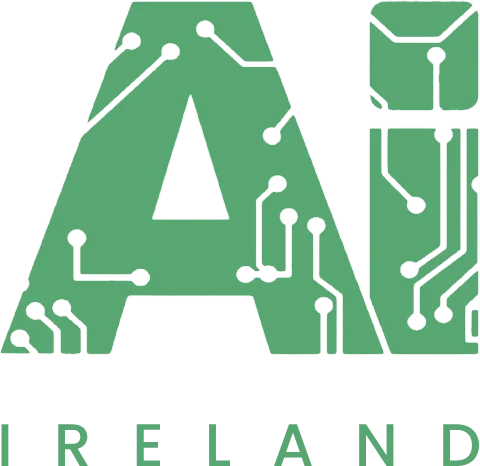Skillsbase
Nominated Award: Best Application of AI to achieve Social Good and Best Application of AI in a Startup
Website of Company: https://www.linkedin.com/company/skillsbaseapp

SkillsBase is a Cork-based services and solutions provider for companies with high-end, complex training requirements, specialising in mobile-first solutions using AI, AR, Engagement Technologies and Blended Learning tools. SkillsBase allows customers to engage remotely with their frontline teams while gaining insightful analytics about usage data; current customers include BT, Openreach, Sky and Munster Rugby.
SkillsBase leverages expertise with utility businesses to create fit-for-purpose solutions to improve user quality, reduce costs and increase customer satisfaction. SkillsBase has a group company, DexGreen, a product design and manufacturing company, providing critical telecom network infrastructure to BT and Openreach. One of Dexgreen’s best-selling products is a Fibre Optic Splice enclosure fitted on the side of every home in the UK.
The challenge for this group company was that their product was being blamed for a high installation fault rate; we had to identify the root cause of these faults in the first place before discovering that AI would be a solution. Through multiple trial programs, we started by encouraging engineers to learn on our SkillsBase Training platform. They used the app for proof of competency. The hope was to involve managers in giving feedback directly; however, the volume was too high, and feedback, if given, was not timely- instead, we began analysing common faults, researching technologies and experimenting, which ultimately gave birth to “Virtual Buddy” which is our AI platform that we provide today.
Building a fibre network requires strong foundations; first and foremost, the engineers working at the frontline need to have all the right tools and knowledge to complete their tasks, the management needs visibility and insights to improve quality and efficiency, and the product manufacturer needs to make their the product as appealing as possible.
The goal of this technology is multi-faceted. For engineers, it is to provide immediate on-the-spot support and a confirmation that the job is done correctly. For management, it is to reduce repeat installation visits, save on costs, materials and lost productivity. For a product manufacturer, it is to provide a unique offering and competitive advantage to its product range while reducing all product complaints and ensuring the job is done right the first time.
The Artificial Intelligence Virtual Buddy platform is a case study of this. Our UK clients, BT and Openreach, have received this very well and currently license the technology for their 36,000 engineers.
Reason for Nomination
SkillsBase was approached jointly by DexGreen and Openreach to enhance its product support further. With fibre boxes being installed at every home in the UK, even the smallest margins of error can be fatal to network health. Therefore, even a 1% improvement has high benefits – it was easy to provide smart solutions and prevent thousands of customers each year from being potentially disconnected from the internet due to an installation fault. We have countless examples of ‘on-the-job’ fixes and long-term improvements in installation quality.
By deploying various trials over 18 months, we identified that an AI solution would be necessary to cater to the demand of engineering installation requirements. It would allow us to respond to all requests. Throughout these trials, we received hundreds of pictures of work quality, identified a trend, and assembled a prototype quickly using off-the-shelf image analysis tools. This prototype prompted a high-profile trial with over 5000 engineers to reduce the fault rate. The trial also dictated how we could best design our mobile app to aid the capturing process and how to describe the feedback given by the AI. E.g. auto-take picture once the image is correctly framed, highlight critical faults more prominently, further training, better content and documentation, allowing engineers to mark a fault as ‘ignored’, which allowed us to retrain the models for increased accuracy.
To achieve the solution we have today, multiple technical and social problems had to be solved:
1.Computer vision – detects small areas of an image Particular objects have tiny components, some as small as a piece of thread, so it wasn’t easy to achieve high accuracy. We had to change how we scanned the objects and wrote our software to wrap onto existing AI tools. This enabled us to detect damage with a high level of accuracy, rule out false positives and provide engineers with much more excellent feedback. The standard AI tool struggled to catch areas smaller than 5% of the entire image,
the region we saw was >0.5% of an image.
2.Interpretation and delivery of A. I Analysis We learned early on that interpretation of AI results is crucial. Analysing and testing the model over time is essential to gauge how and why specific results are given. This helped us interpret it in a meaningful way for the end user. Delivery of such results has to be near perfect – clearly distinguishing between a fault, a warning or a nice-to-know problem. It can be the difference between a happy and an angry end-user. For E.g. we have found throughout our trials that mentioning ‘Did you know? You can do this…’ was often interpreted as a fault rather than a helpful tip. We were also able to add a new fault to our models and see its benefits the very same day, as engineers were shown this new fault and were able to react accordingly.
3.Social impact of wrong detections
Fear of AI technologies cannot be ignored, and we tried to do everything we could to make the end users feel safe when using Virtual Buddy. We provide their data back to them where possible and collect only necessary information – nothing more.
4.Fit Virtual into an engineer’s tool kit without disrupting jobs and with no upfront capital cost Virtual buddy needed to be simple, fast and effective to be adopted by engineers. Our UI, UX, and AI analysis had to be sleek and fast. We have also developed software to help support other products without any subject matter experts by using a smart form builder to help communicate the fault
detections effectively. Users can build an AI model by applying a simple logic pattern: Faults to detect, Minor issues to flag, the severity of detections, the probability threshold of each fault detected, if enhanced processing is to be used and many more. Our AI Models can be deployed very quickly, ensuring that it’s a practical and fit-for-purpose solution.
5.A limited supply of AI-trainable photos
A limitation for platforms of this kind is generally the number of photos required to start the image bank; we have overcome the technical hurdles, and our technology enables us to build a functional, field-ready AI tool with as few as 20 photos. We have incorporated smart image enhancements, enhanced image processing and image multiplication features to automatically develop and train an accurate image bank. The developer’s efforts are minimal, and no coding is required.
Additional Information:
While the current solutions are based on telecoms, particularly fibre optic connections, there is minimal risk of harm if a failure occurs. SkillsBase explores and uses this solution for mission-critical scenarios, such as power or gas installations. SkillsBase has partnered with the most prominent UK utility training provider to bring this technology to more markets. AI technologies remove many of the standard hurdles in creating a practical AI solution. It was a massive business transformation from traditional training methods to a remote and self-auditing tool.
DexGreen Ltd supplies critical fibre optic products to its customers, particularly cables and enclosures. The AI virtual buddy technology has provided an invaluable offering and competitive advantage to its product range while reducing all product complaints and ensuring the job is done right the first time.
Openreach – Openreach is a subsidiary of BT and is the largest telecom carrier in the United Kingdom. Openreach Learning and Development Department has licensed this technology for use by all 36,000 of its engineers. Openreach’s contractors have also received access to these mobile applications. Contacts can be provided for individuals to support this nomination. Customer testimonials can be found in the attached case study files.
Files:
https://aiawards.ie/wp-content/uploads/ninja-forms/4/Attachment-1-2022-07-28-SkillsBase-Company-and-Solution-Introduction-1.pdf
https://aiawards.ie/wp-content/uploads/ninja-forms/4/Attachment-4-2022-07-27-Anonymised-Virtual-Buddy-Images-v2-1.pdf
https://aiawards.ie/wp-content/uploads/ninja-forms/4/Attachment-3-2022-05-30-SkillBase-Virtual-Buddy-1.pdf
